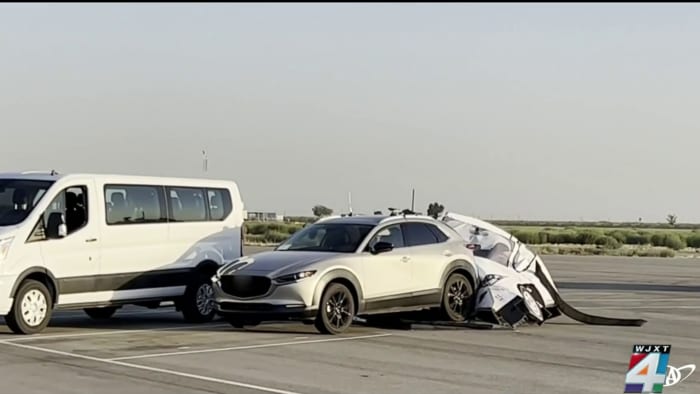A new AAA study found that systems designed to automatically apply emergency braking when a vehicle is reversing are “not foolproof.”
This technology is designed to prevent drivers from backing up into pedestrians or approaching vehicles.
AAA studied four vehicles that combined reverse automatic emergency braking (reverse AEB) with a rear cross-traffic calming device. The system is designed to detect cross traffic behind you and automatically apply the brakes to avoid collisions with other cars, pedestrians, cyclists, or stationary objects.
“While this technology has been proven to significantly reduce rear-end collisions, it is not foolproof,” said AAA spokesman Mark Jenkins. “Our tests involved simulated collisions with vehicles and pedestrians. Drivers must therefore remain alert at all times and avoid relying too much on technology.”
AAA said its engineers wanted to address two questions:
-
How does the Reverse AEB system with rear cross-traffic mitigation work when reversing out of a parking space into the path of oncoming traffic when a vehicle parked in the adjacent parking space is blocking your view? ?
-
How does a reverse AEB system behave when encountering a statically simulated child pedestrian behind the car?
Read the full report.
As part of AAA's study, four popular 2023 model year vehicles equipped with reverse AEB with rear cross-traffic mitigation were evaluated. Only the reverse AEB system, which has the ability to detect rear cross traffic and automatically apply the brakes, was tested.
Main findings:
-
Scenario A (With the test vehicle parked vertically, back out of the parking space and enter the path of an oncoming vehicle.)
-
Scenario B (Place the test car in a diagonal parking space and back out of the parking space into the path of an oncoming vehicle)
-
Scenario C (Backing out of the parking space and moving into the path of a stopped pedestrian child)
NHTSA estimates that approximately 210 people are killed and 15,000 injured in backover crashes each year. Of those deaths, about 31% are children under 5 years old. In addition to vehicle-vehicle collisions, it is important to evaluate the effectiveness of these systems in preventing or mitigating collisions with pedestrians, especially children.
AAA's advice to drivers
-
Drivers should not rely on the reverse AEB system to prevent collisions when reversing. Even in the pedestrian scenario, only 50% of his runs prevented a collision since the target was stationary and had an unobstructed view during the test run.
-
Drivers must be fully aware of their surroundings, use backup cameras to increase awareness, and back up carefully.
-
Drivers need to understand how these safety features work to give them the best chance of benefiting.
-
When reversing with reduced visibility, the driver backs up carefully and pauses once the rear of the vehicle clears the obstacle, allowing sensors typically mounted in the rear bumper area to detect cross traffic. is needed. This gives the system more time to detect a potential collision and stop the vehicle.
WJXT News4JAX Copyright 2024 – All rights reserved.


